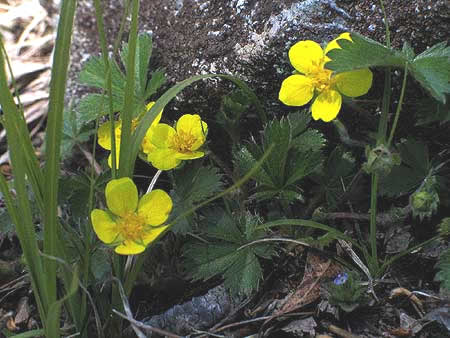 Dwarf Cinquefoil
Dwarf Cinquefoil
Potentilla canadensis
small plant
BIG HISTORY
Information below is from
The Physiomedical Dispensatory, 1869
Description: Natural Order, Rosaceae. This is a small plant, with a hairy and procumbent stem running upon the ground two or more feet, sometimes ascending, giving off runners after the manner of the strawberry, to which genus (fragaria) it is closely allied in appearance and habit. Leaves compound, palmately five-parted, leaflets oblong or obovate-wedge-form, cut dentate toward the apex. Flowers solitary, on long axillary peduncles; calyx five-cleft, with five long and alternate bractlets which look like additional sepals; petals five, spreading, obcordate, yellow; stamens many. June to August. Other species are much smaller than this one; and some are erect, two to four feet high, and even shrubby.
Properties and Uses: The herb five-finger was at one time in high repute as a medicine, and was accredited with almost miraculous powers; but it is only a mild astringent with tonic powers, nearly resembling the leaf of the raspberry, and usable for the same purposes. The common mode of exhibition is by infusion. The tormentil roots are quite purely and actively astringent; and though much employed in some sections of Europe, are scarcely known or used in this country.
Name: Five-finger grass
Biological Name: Potentilla canadensis, Potentilla reptans
Other Names: Five-finger grass, cinquefoil, finger leaf, five fingers, cinquefoil, European five finger grass
Parts Used: Root, leaves
Remedies For: Five-finger grass makes a good gargle and mouthwash and a good remedy for diarrhea. The powdered root or bark of the root can be used, as well as the leaves. The root bark has also been recommended for stopping nosebleed and other internal bleeding.
Description: Five-finger grass is a perennial plant found mostly in dry soils in the US and Canada. Its procumbent stem bears petioled leaves palmately divided into five sharp-toothed, obovate to oblanceolate leaflets. Solitary yellow flowers grow on long peduncles from the axils of the leaves from April to August